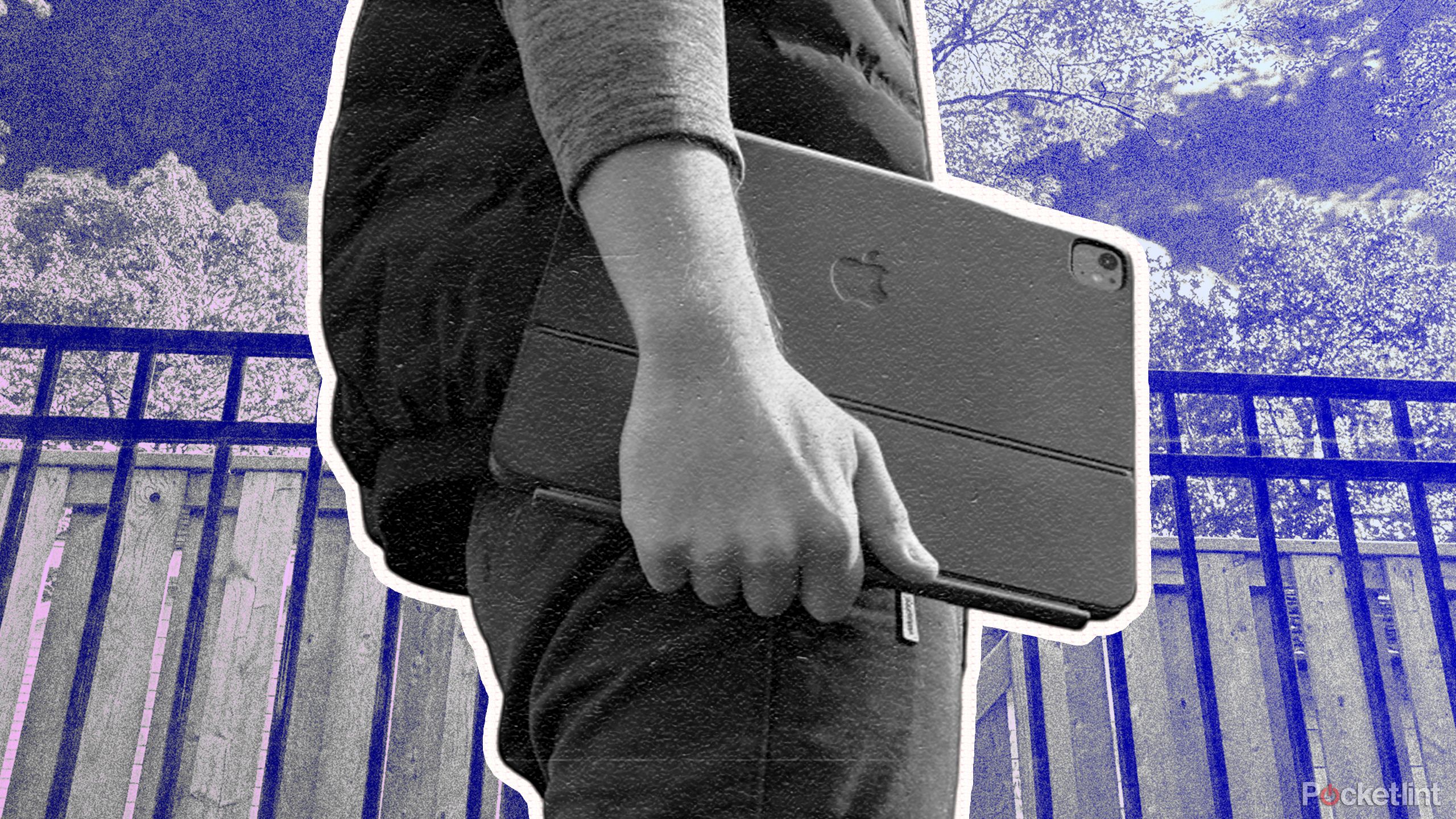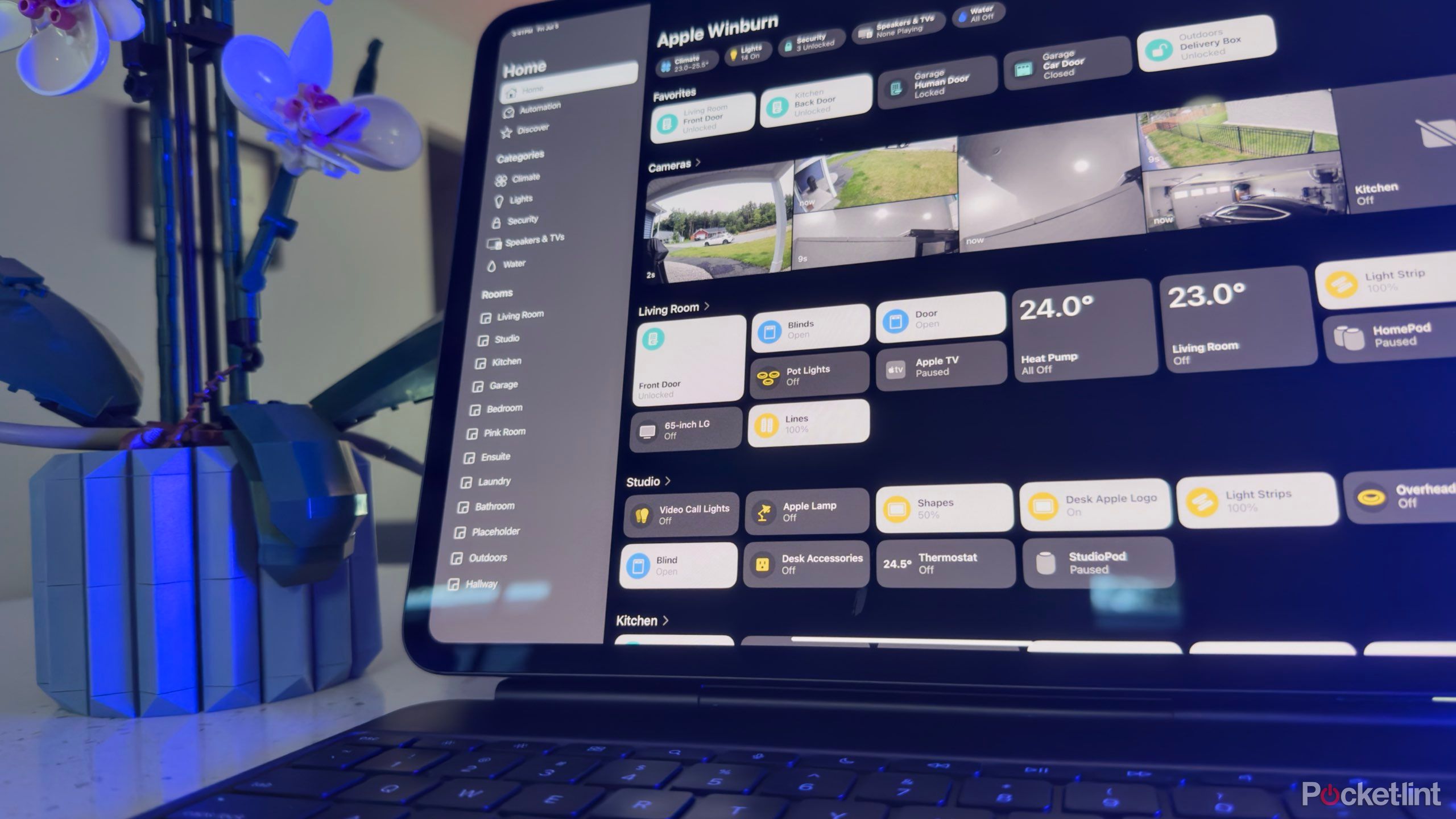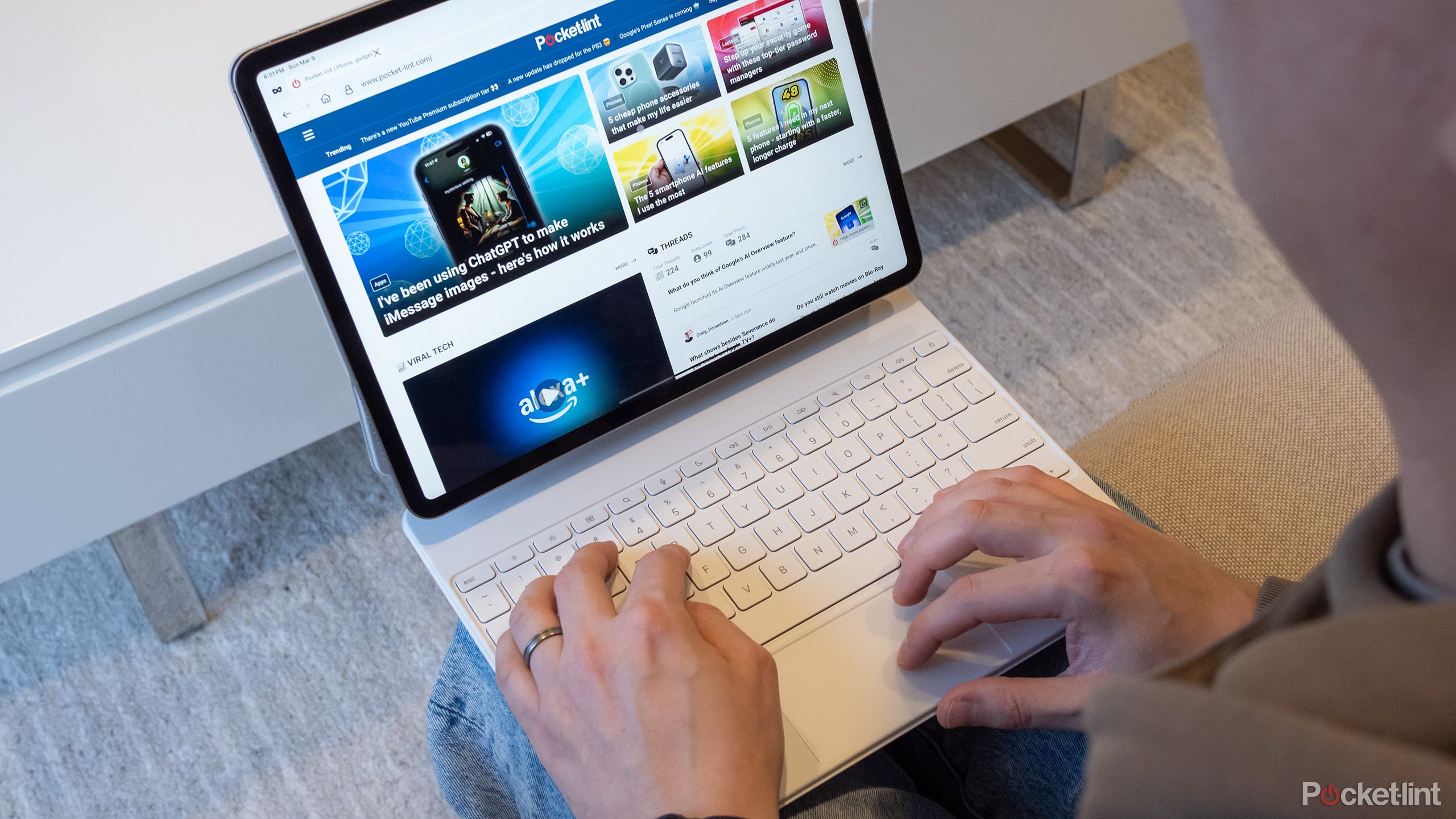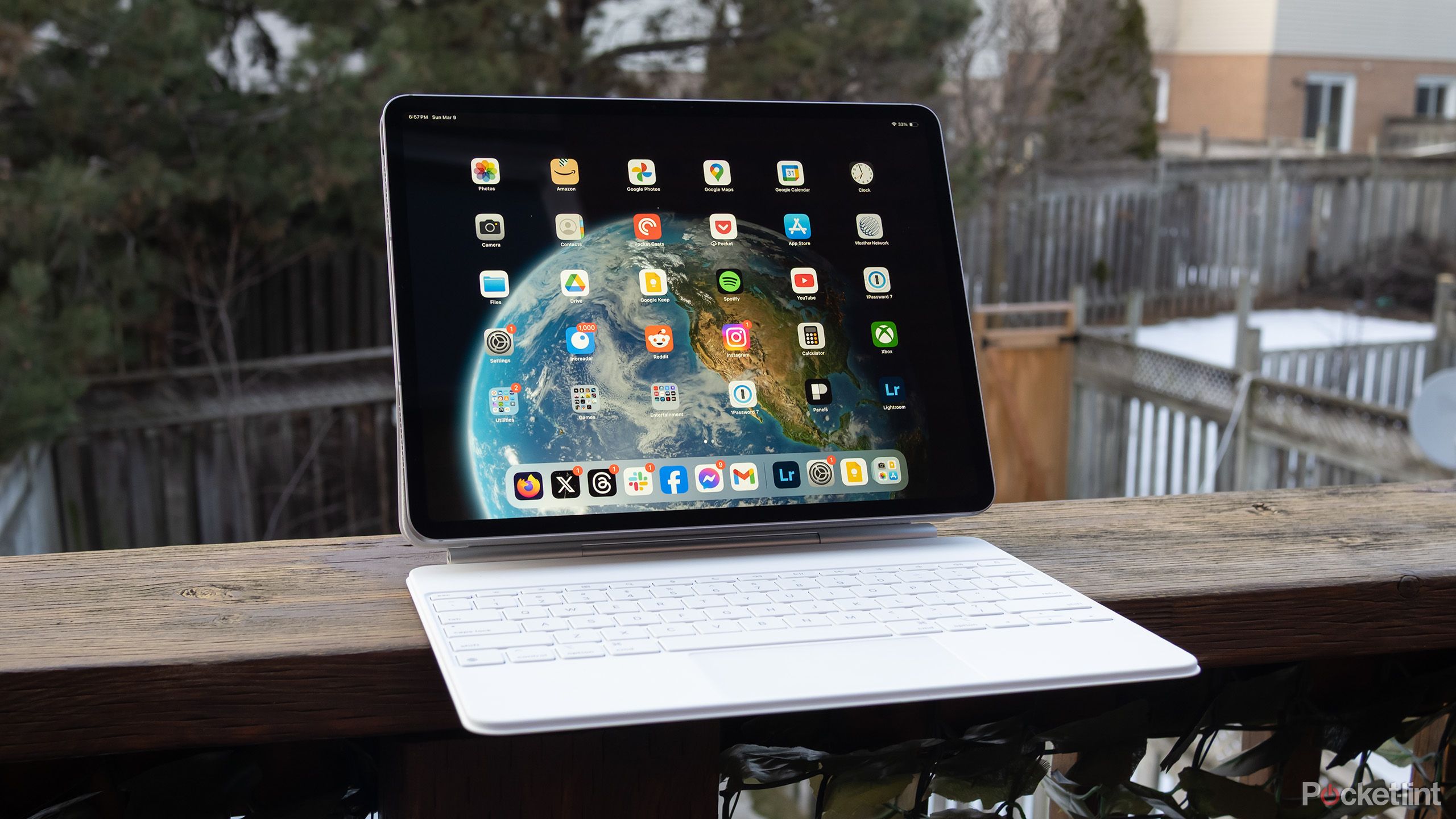Summary
- An iPad is capable of handling personal tasks like reading and web browsing without many accessories.
- For professional use, invest in a 128GB iPad Air, keyboard, and iCloud+ for improved multitasking.
- Flexibility and compatibility issues with iPadOS may limit its potential as a laptop replacement.
The iPad has always occupied an odd limbo space in Apple’s product lineup. When Steve Jobs introduced the first model in 2010, it was positioned as something between a Mac and an iPhone, if probably closer to the latter. For a few years, Apple even emphasized the product’s usefulness as an e-reader, putting the Amazon Kindle in its crosshairs. Never mind that until the iPad mini, every model was too heavy to hold one-handed for more than a minute or two.
As hardware and software have progressed, the iPad has become increasingly laptop-like, to the point that some people have tried using it for all their computing needs — not just tasks like reading, video, web browsing, and checking email. Is it realistic to buy an iPad as a laptop replacement, though? Potentially, but it’s very important to be aware of strengths, weaknesses, and necessary accessories.

Related
4 tips for traveling safe and sound with your iPad
Don’t just grab your iPad and go, spend some time planning things out.
What do you need to make an iPad a laptop replacement?
Personal use versus professional
The first thing to say is that if there aren’t any critical work tasks involved, an iPad is more than capable of dealing with personal tasks, such as the ones I mentioned in the intro. The iPad app ecosystem is robust enough at this point, especially if you’re willing to rely on cloud-based services like Google Docs and Spotify. You may not even need many accessories. At a minimum, I’d recommend a folio case that doubles as a stand, and a keyboard for jamming out emails, short messages, or social media posts. You can, of course, buy a dedicated keyboard case if you want to kill two birds with one stone, and some cases feature trackpads for mouse-like precision. You can pair a Bluetooth mouse if you’ve got the desktop for it.
I’d also suggest ponying up for AppleCare+ and iCloud+. If you don’t have a traditional computer to fall back on, it’s important to get a broken iPad fixed or replaced right away, and have all your data backed up in the cloud. By default, iCloud only includes 5GB of storage — which may not be enough to back up the essentials on your iPad, never mind things like photos, videos, and important documents. You can also use third-party storage lockers like Google Drive, but those won’t cover app data and iPadOS settings.
If you do want to get work done on an iPad, be prepared to spend more on specs, apps, and accessories.
If you do want to get work done on an iPad, be prepared to spend more on specs, apps, and accessories. I’d consider a 128GB iPad Air the baseline for getting work done, since that gets you enough room for apps and most documents, plus an M-series processor capable of handling Stage Manager multitasking and any app requirements. It may be worth upgrading to 256GB or more of internal storage, bearing in mind that you can connect an external drive for some files. Just don’t expect to save apps on that drive, or content that’s treated as integral to an app, such as cached music from Spotify.
If you want a laptop replacement, I’d strongly suggest making your case a Magic Keyboard or a reputable clone. Why? The Magic Keyboard props your iPad up for easier viewing, while letting you quickly remove it when you want to go handheld. There’s even a USB-C connector for passthrough charging, freeing up the USB-C port on your iPad for other accessories.
Regardless, you may still want a USB-C hub, or a USB 4/Thunderbolt 4 hub if you’ve got an iPad Pro. That makes it possible to connect a variety of accessories simultaneously, say if you want both control and storage peripherals. Some hubs also include built-in HDMI and/or DisplayPort outputs, helpful for connecting a monitor or TV. Via Stage Manager, you can run separate windows on that display and your iPad.
Speaking of multitasking, I’d recommend buying a 13-inch iPad model, whether that’s an Air or a Pro. It’s possible to get by with 11 inches, but in the context of replacing a laptop, 13 inches offers considerably more room for window elements and content. You’ll definitely want 13 inches if you don’t have an external screen available.

Related
Is it worth buying a tablet to use as a smart home hub?
Not everyone needs that level of control.
How well does an iPad work as a laptop replacement?
Don’t get too excited, folks
Apple
For some work tasks, it’s just fine, maybe even preferable. If I’m able to do writing in Google Docs, there’s nothing stopping me from putting that app side-by-side with Chrome, so I can write and check research materials at the same time. It would be nice if I didn’t have to switch away from those apps — or connect a monitor — to chat on Slack, or see what’s playing on Spotify, but that’s a relatively small sacrifice.
An iPad Pro is reportedly good enough for some professional video, photo, and music production tasks. Being a written journalist, I can’t speak to those from experience, but YouTubers like Marques Brownlee and Christopher Lawley have edited videos on an iPad, mostly just complaining that iPad apps don’t always carry over all the features from their Mac and Windows counterparts.
Limits make it extremely important to verify not just that an app is available for iPadOS, but that it does everything you want, the way you want.
That takes me to the main obstacles you’re liable to have with an iPad: flexibility and compatibility. iPadOS is highly regimented and sandboxed, like an iPhone, which means that iPad apps simply can’t do all the things that are possible in macOS or Windows. Indeed, you can’t even mod the iPadOS interface, whereas there’s a whole cottage industry for that on other platforms.
These limits make it extremely important to verify not just that an app is available for iPadOS, but that it does everything you want, the way you want. This even extends to web apps. Some websites don’t function the same way on iPads as they do on a laptop, which can wreak havoc. I’d only try Pocket-lint’s web publishing interface on an iPad if I had no other choice.
There are similar issues with the iPad filesystem. Its Files app pales in comparison to Finder or File Explorer, and the system doesn’t offer the freedom to explore, copy, and move every item at will. That won’t be an issue for many people, but if you’re used to doing exactly what you want with an OS, you’ll be sorely disappointed.
I’d also suggest going with a Windows PC, a handheld, or a dedicated console if you’re interested in gaming. There are excellent titles available for iPads to be sure, including high-profile titles like Stardew Valley and Resident Evil: Village. But PC- or console-quality games are few and far between, so an iPad is sometimes better used as a remote access portal to your other gaming devices.

Related
The ROG Ally X is great, but the Steam Deck OLED easily beats it in 4 key ways
I like the ROG Ally X, but when it comes to on-the-go gaming, I find myself turning to the Steam Deck OLED – here’s why.
The final verdict
Spend your dollars carefully
Ultimately, the answer is yes, but only within narrow avenues. An iPad is great for browsing, email, and casual entertainment, but some more serious tasks may be blocked by the limitations of iPadOS and/or its apps, assuming the apps you need are available. You may also end up spending a lot of money on upgraded specs and accessories, to the point that you might match or exceed what you’d spend on a laptop. Personally, I’d get more out of a $2,000 gaming-quality laptop than I would an equivalent iPad Pro setup.
If you’re undecided, the laptop is probably the safest bet.
There are benefits to choosing an iPad, naturally. iPads tend to be lighter and slimmer, for one, which makes them excellent for travel. And for some people, a touch interface is going to be more intuitive than a trackpad and keyboard. I haven’t even mentioned the Apple Pencil yet — if you’re an illustrator, an iPad paired with an Apple Pencil Pro may be an unbeatable combination.
If you’re currently deciding between a laptop and an iPad, spend a few days or more considering what you want to do with them. If you’re still undecided, the laptop is probably the safest bet.

Related
Does smart tech really add that much to your fitness regimen?
The full answer varies from person to person, but here’s my gym-buff take.
Trending Products

AULA Keyboard, T102 104 Keys Gaming Keyboard and Mouse Combo with RGB Backlit Quiet Laptop Keyboard, All-Steel Panel, Waterproof Gentle Up PC Keyboard, USB Wired Keyboard for MAC Xbox PC Players

Acer Aspire 3 A315-24P-R7VH Slim Laptop computer | 15.6″ Full HD IPS Show | AMD Ryzen 3 7320U Quad-Core Processor | AMD Radeon Graphics | 8GB LPDDR5 | 128GB NVMe SSD | Wi-Fi 6 | Home windows 11 Residence in S Mode

Megaccel MATX PC Case, 6 ARGB Fans Pre-Installed, Type-C Gaming PC Case, 360mm Radiator Support, Tempered Glass Front & Side Panels, Mid Tower Black Micro ATX Computer Case (Not for ATX)

Wireless Keyboard and Mouse Combo, Lovaky 2.4G Full-Sized Ergonomic Keyboard Mouse, 3 DPI Adjustable Cordless USB Keyboard and Mouse, Quiet Click for Computer/Laptop/Windows/Mac (1 Pack, Black)

Lenovo Newest 15.6″ Laptop, Intel Pentium 4-core Processor, 15.6″ FHD Anti-Glare Display, Ethernet Port, HDMI, USB-C, WiFi & Bluetooth, Webcam (Windows 11 Home, 40GB RAM | 1TB SSD)

ASUS RT-AX5400 Twin Band WiFi 6 Extendable Router, Lifetime Web Safety Included, Immediate Guard, Superior Parental Controls, Constructed-in VPN, AiMesh Appropriate, Gaming & Streaming, Sensible Dwelling

AOC 22B2HM2 22″ Full HD (1920 x 1080) 100Hz LED Monitor, Adaptive Sync, VGA x1, HDMI x1, Flicker-Free, Low Blue Mild, HDR Prepared, VESA, Tilt Modify, Earphone Out, Eco-Pleasant

Logitech MK540 Superior Wi-fi Keyboard and Mouse Combo for Home windows, 2.4 GHz Unifying USB-Receiver, Multimedia Hotkeys, 3-12 months Battery Life, for PC, Laptop computer










